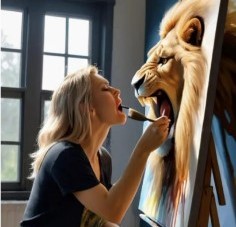I have now been working with an art AI for nearly one month. Time and experience have taught me that the Starryai system is best used to create background scenery that’s devoid of people or by making individual figures of men, women, and children. So long as I keep my requests simple and am sufficiently detailed with the written prompt that the AI uses as a guide for creating its artwork, I have been quite pleased with the results.
Within the last two weeks, I have begun using this AI to create a graphic novel. I will share the opening outline of this novel here. Please note that I am only including a few excerpts of the digital imagery that I’ve been working on. I will not be sharing the entire draft since this would defeat the point of publication.
The premise of this story is that in our present day, a young Mesoamerican archeologist named Dr. Margaret Wallace has journeyed deep into the Amazon in search of a ruin that the Maya referred to as “Witso’ Voladora,” or Flying Mountain.
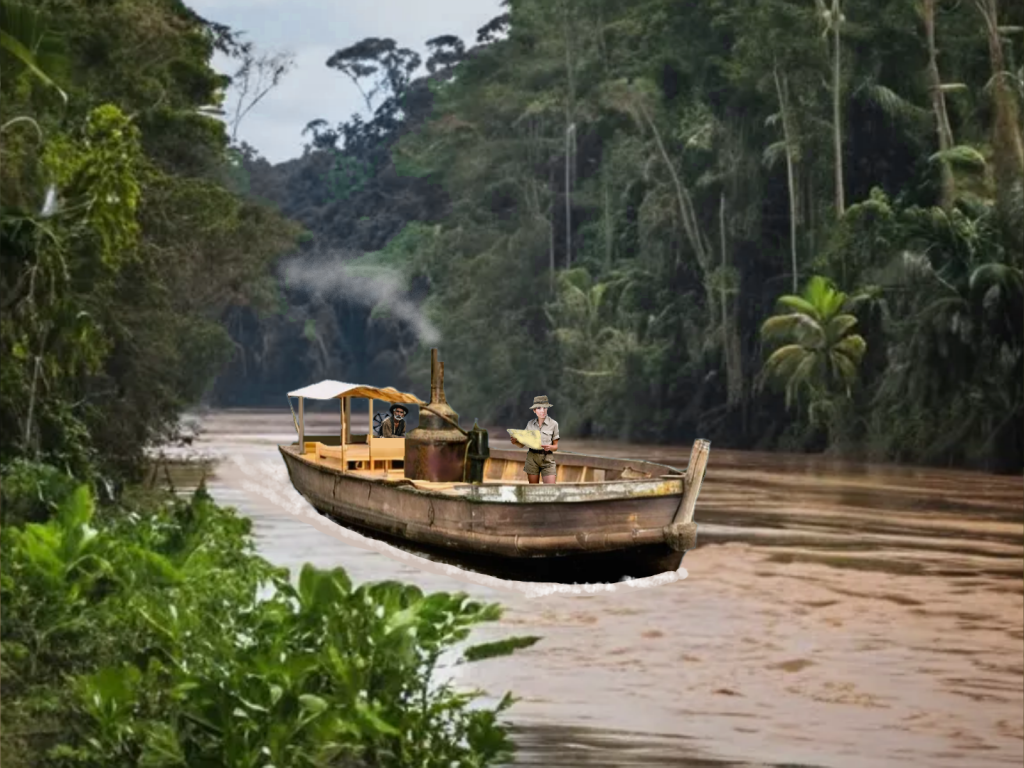
Much to the amusement of her older and more established colleagues, Dr. Wallace believed that this ruin could be the site of an alien spacecraft. This belief was encouraged by the recent discovery of a remarkably well preserved hand-carved stone tablet that was recently unearthed at Calakmul, a Maya archaeological site in the Mexican state of Campeche which lies deep within the jungles of the greater Petén Basin region.
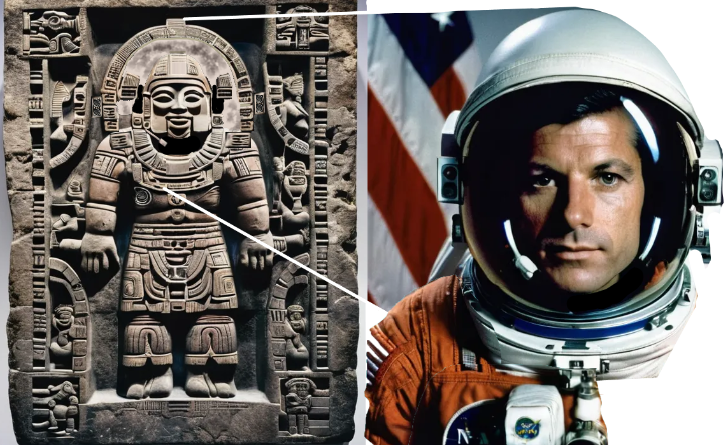
Although the tablet appeared to show what could be the image of an astronaut complete with enclosed helmet, microphone, and padded suit, what really caught the attention of the young historian was that the accompanying Maya hieroglyphics spoke of a stranger “not of this world,” who had come from “Witso’ Voladora.” This site was said to lie within a day’s travel of the ruins of Chuchini, a vast city that had been built by the Casarbe, a civilization that had vanished long before the rise of the Maya.
Low on supplies and unable to extend university funding for a second expedition, Dr. Wallace was on the verge of turning back when she discovered an overgrown stone border marker. Although the name of the city that this marker had belonged was no longer visible, the archeologist was hopeful that she was nearing her goal.
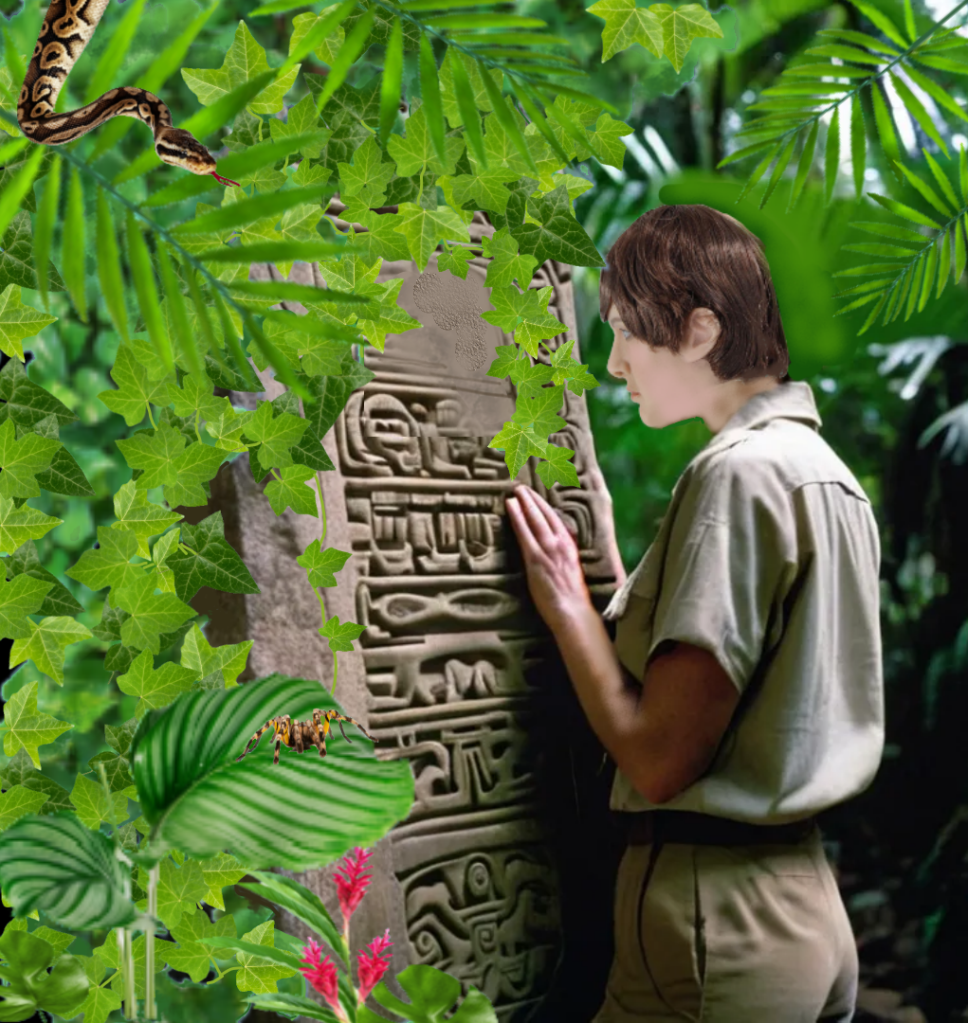
Since Ramon, the grizzled old pilot of her river boat (pictured below), refused to trek into the jungle, she took some supplies and Ramon’s promise to wait for one week before she shouldered a knapsack and journeyed deep into the rain forest following an overgrown game trail.
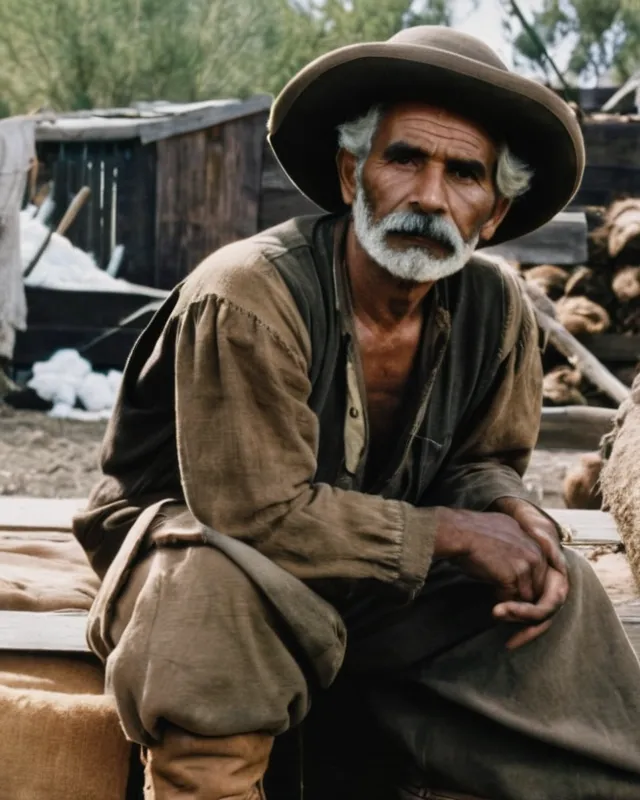
The way was hard and she sometimes had to use a machete to clear a path through the thick foliage. Her persistence paid off when she stumbled into a clearing where she found the ancient wreckage of an alien space vessel. While she was elated over this discovery, she also realized this spacecraft wasn’t nearly big enough to have been a “flying mountain”. She found herself wondering if the story about what had happened had been grossly exaggerated by the long vanished Casarbe people.
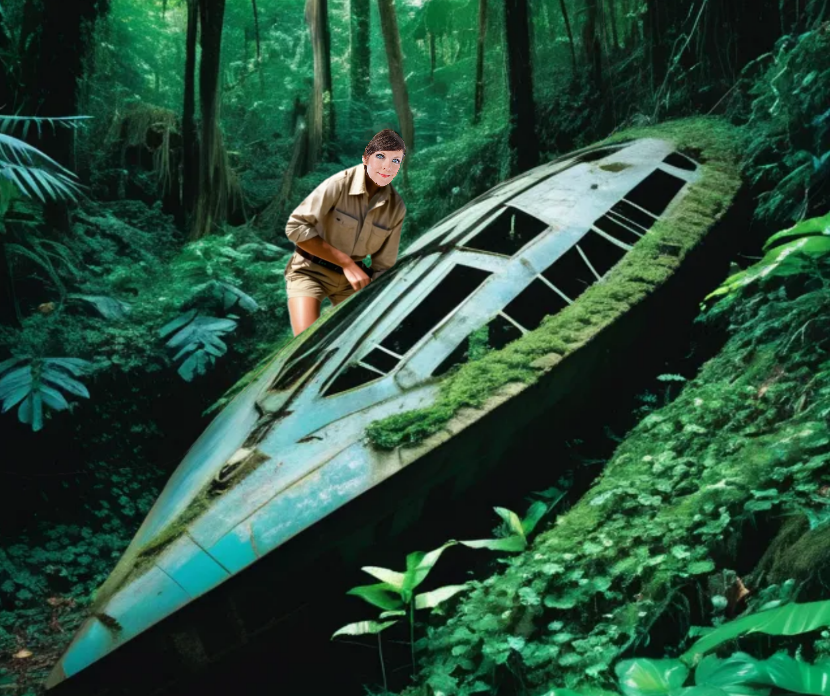
A careful examination of the vessel found an external locking mechanism along one side. Unable to turn the rusted mechanism, she resorted to hitting it with a rock, which finally allowed her to open the vessel’s canopy. Nestled within the craft were the remains of a long dead humanoid.
Since this vessel had only been large enough for the solitary passenger, logic would suggest that the stranger who had visited Calakmul, had not come from this particular spacecraft.
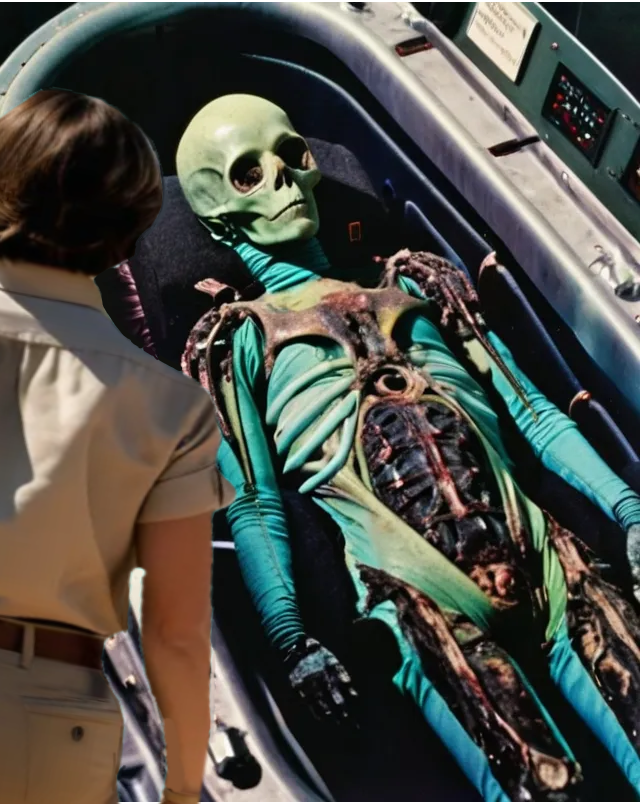
While Doctor Wallace found herself wondering if this vessel was some sort of scout ship or perhaps a life pod, an obsidian tipped arrow suddenly flew past her, shattering itself on the alien craft. The archeologist was forced to run as hostile indigenous tribesmen attacked.
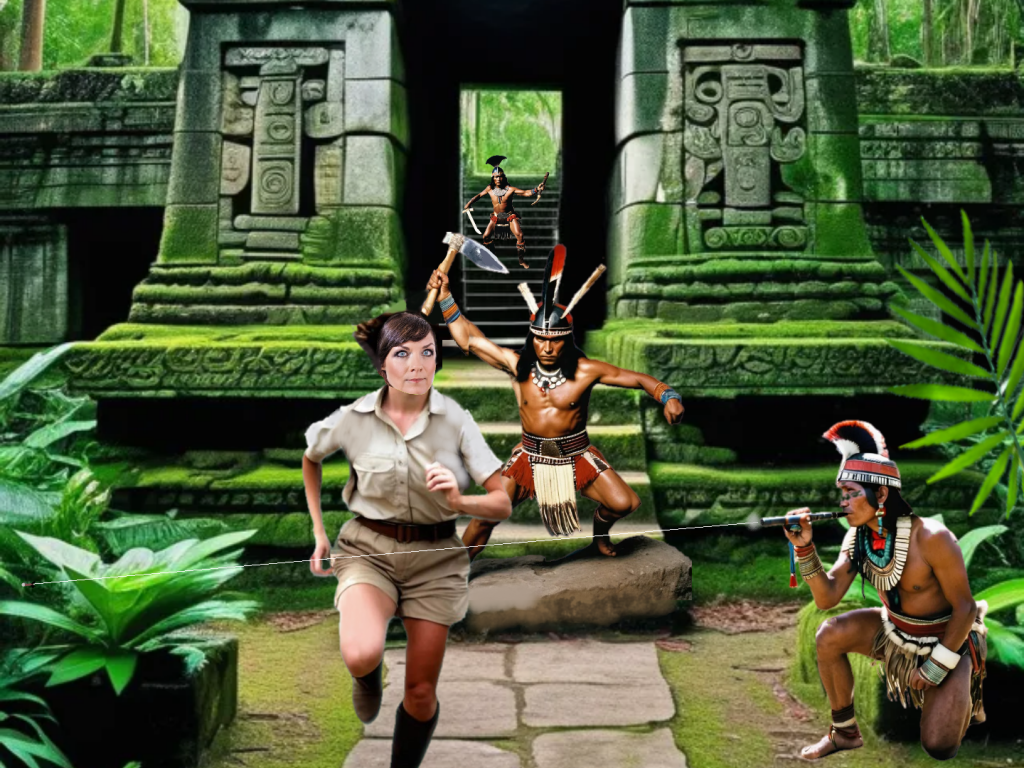
Spying a creek that was filled with raging white water rapids, Margaret desperately used some boulders as stepping stones to evade the angry locals.
In looking behind her, Margaret was surprised to see that the pursuit had ended. Why had the tribesmen stopped chasing her?

The answer soon became apparent after she crossed the field and found herself standing on a ridgeline looking down into a valley. She stared at what could only be the wreckage of Witso’ Voladora, the Flying Mountain.

Given that the Casarbe civilization had ceased to exist at least 100 years before the rise of the Maya, Margaret estimated that the wreckage of this space vessel had to be at least 3,524 years old.
After descending into the valley and climbing the gangway, she found the body of a mummified alien lying just inside the ship’s open entryway. Margaret thought that this figure looked surprisingly human. Since she was no longer being pursued by hostile locals, she had time to notice that each of the corpse’s gloved hands only had a thumb with three fingers.
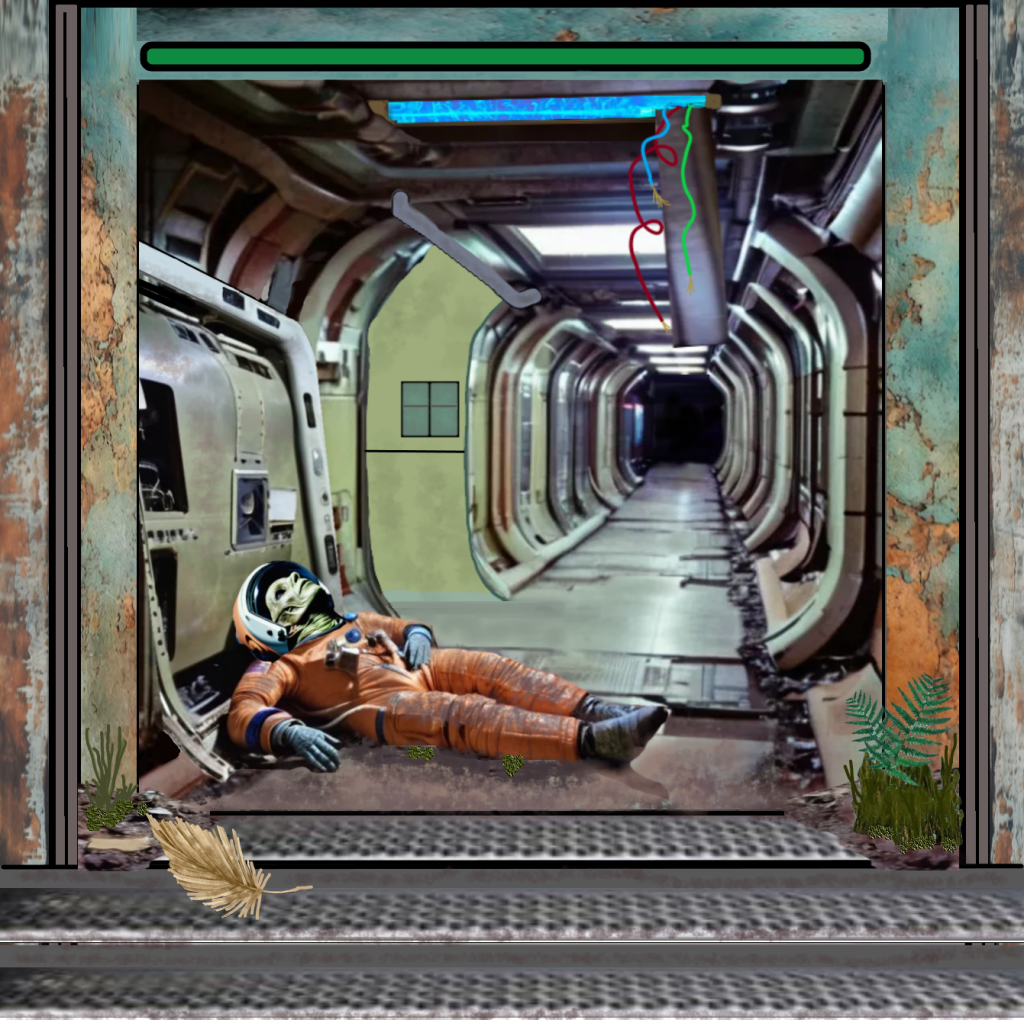
Despite its age, the vessel appeared to be in surprisingly good shape. A good part of it was still functional as evidenced by the overhead lighting and what appeared to be blue plasma that was bubbling through a transparent conduit.
In exploring this vessel, she found a still working station with holographic controls, the purpose of which completely eluded her. She found a lab with what appeared to be two functioning cryogenic chambers that were occupied by aliens. She also found what appeared to be an elevator. The fact that so much of the vessel was still working was a huge testament to the ability of its ancient builders and the strength of whatever power source they had installed in this vessel.
Aside from having made the archeological discovery of the millennium, Margaret realized if the technology could be reverse engineered, a careful study of this vessel could have long reaching implications for the entire world. Not only would Dr. Margaret Wallace become famous once word got out about her find, but if she played her cards right, she could also become quite wealthy.
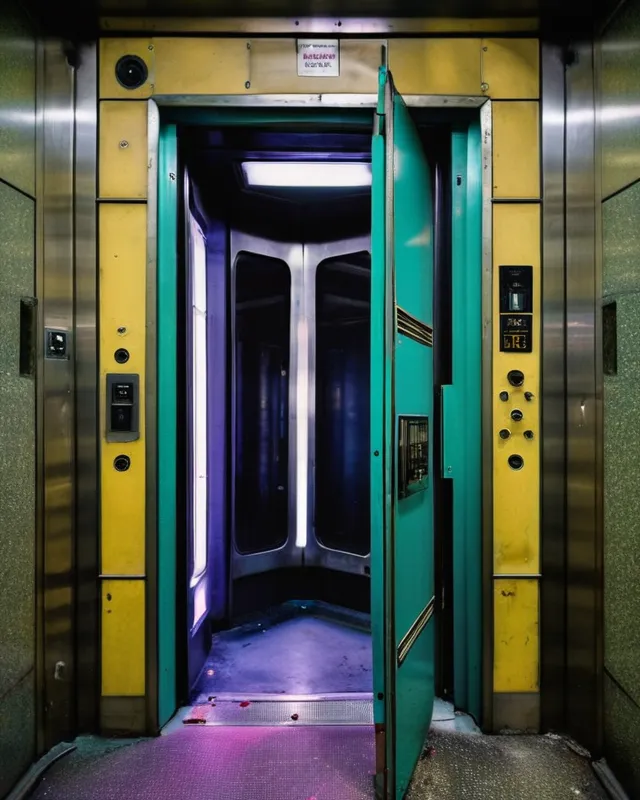
Having found what appeared to be a still functioning elevator, the archeologist entered the compartment, anxious to explore every nook and cranny of this vessel. The control pad for the elevator was marked with strange alien glyphs. When Margaret chose a button at random, she soon learned that she was not in an elevator. As an energy field formed around her, she abruptly found herself falling through a swirling vortex.
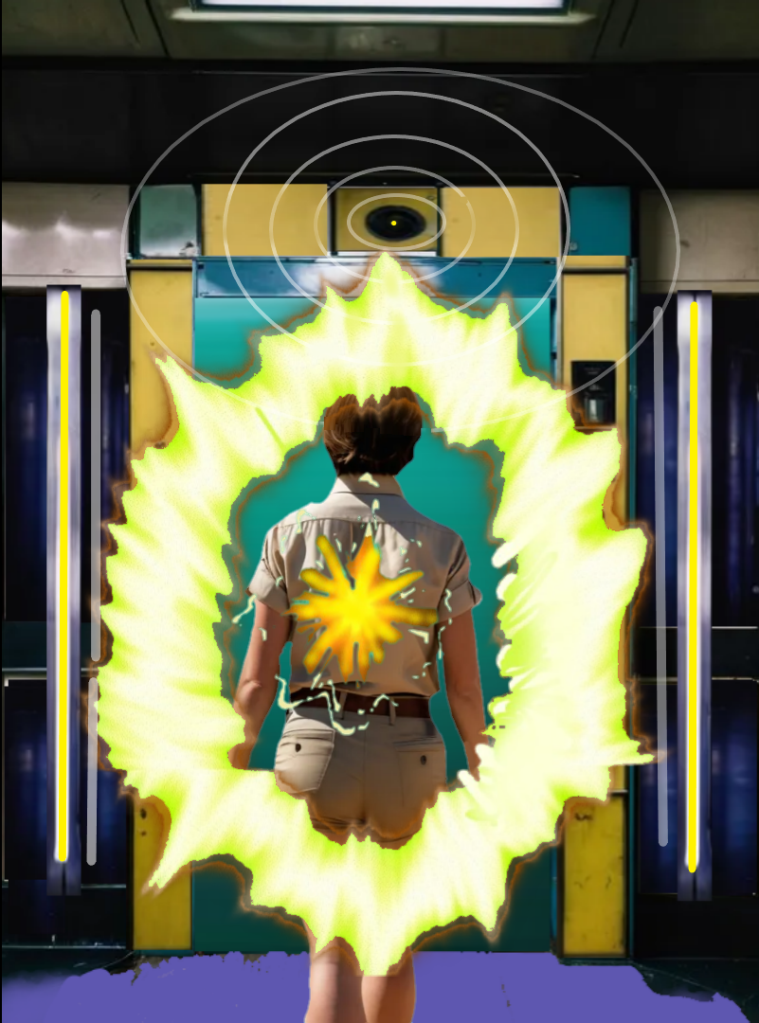
Her fall ended when she abruptly landed on the hard tiled floor of what appeared to be the spacious stall of a public restroom.
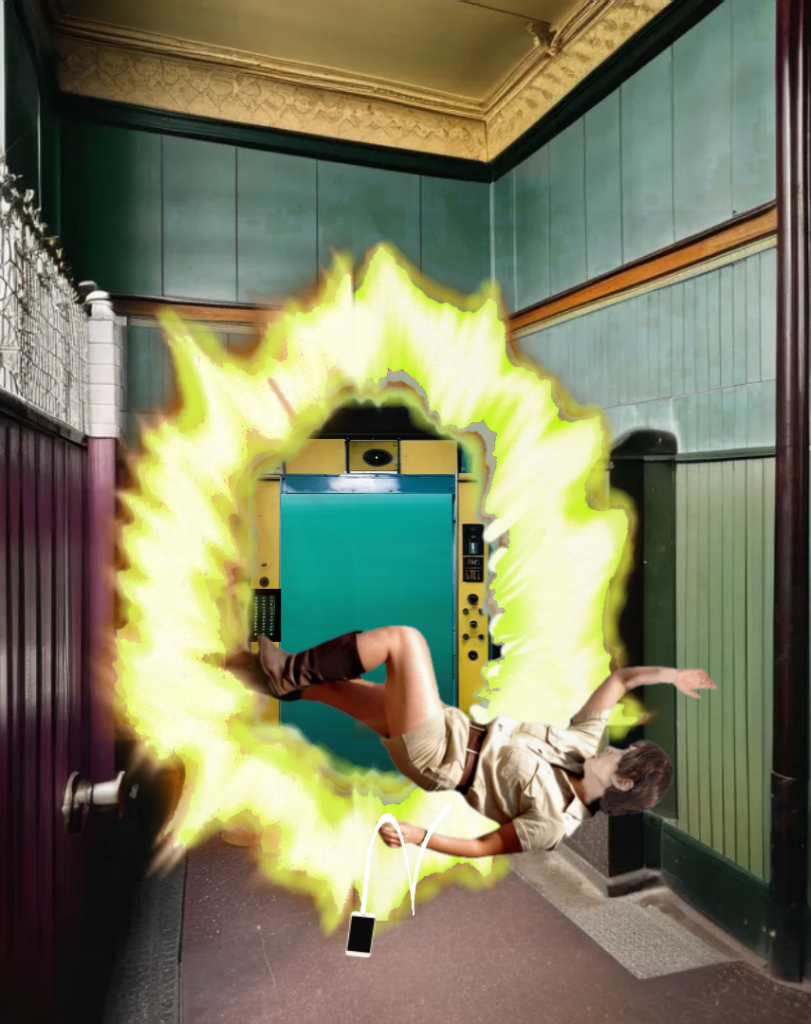
She was further surprised when a woman who appeared to be a Victorian reenactor, rushed into the stall. After stepping on her cell phone, the startled woman slipped and fell headlong through the portal which abruptly winked out leaving Margaret unable to return to the alien starship.
Since the stranger had inadvertently crushed Margaret’s cellphone before dropping her purse, Margaret went through the woman’s handbag to see if she had a cellphone. To her disappointment, the purse only contained items that were period appropriate for a Victorian reenactor.
In addition to folded period paper currency and loose coins that had been neatly tucked away in a leather drawstring bag, she found a U.S. passport of the sort that had been issued prior to 1915 when the United States began including photographs with their passports. According to the passport, the woman’s name was Elizabeth Wallace. Margaret found this to be a curious coincidence because she had a distant ancestor who had also been named Elizabeth Wallace.
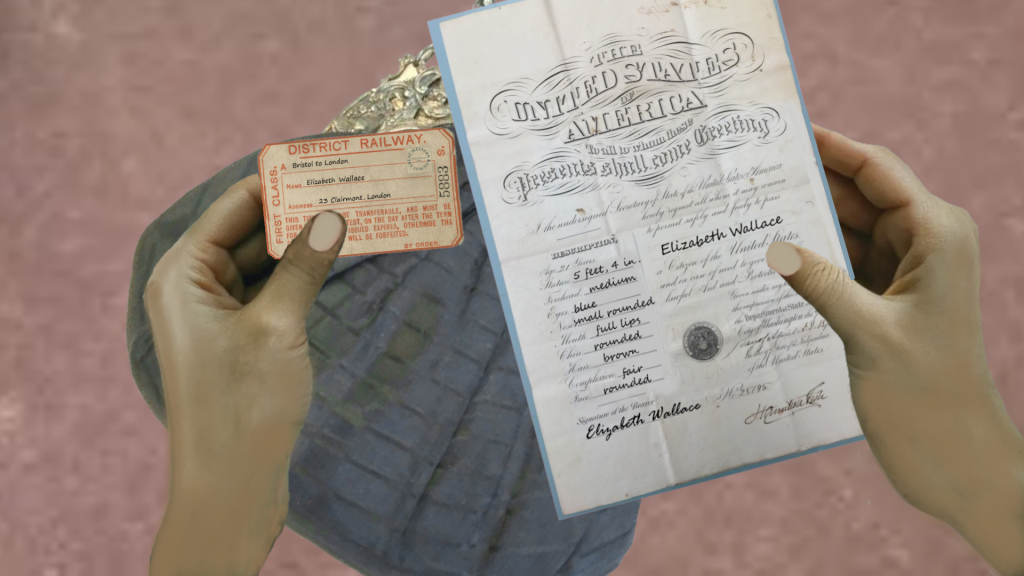
The purse included a comb, a piece of cardboard with several pins and hairpins, a skeleton key, a folded handkerchief, and a first class train ticket for the Great Western Railway. The GWR was an old British railway company that had once linked London with the southwest, west and West Midlands of England.
Margaret shook her head over the thought of how much detail the stranger had placed into creating her persona as a reenactor.
After leaving the stall, Margaret found that she was indeed inside a public restroom. When she peered past the surprisingly ornate bathroom door, she saw that she was inside a train station. Acting upon the assumption that train stations have public land-line telephones, she left the restroom.
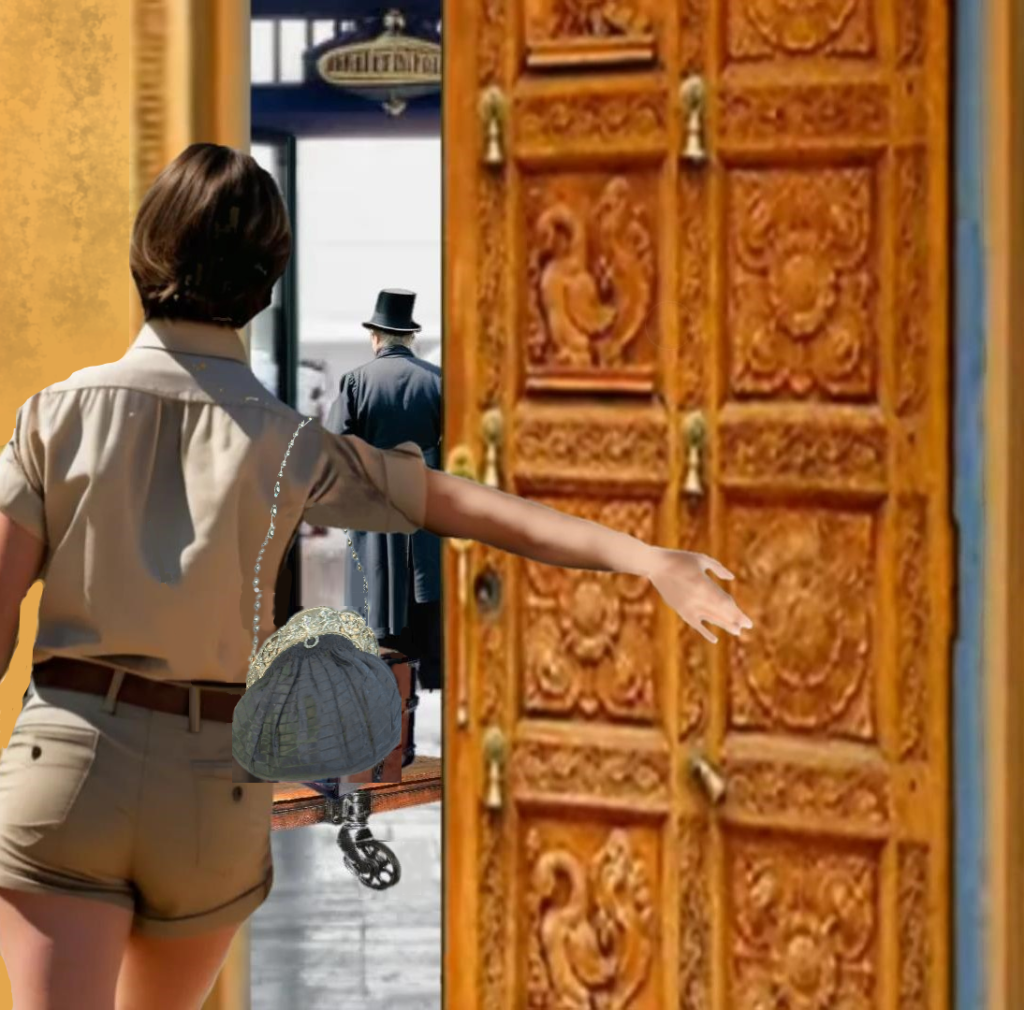
There was a collective gasp as Margaret entered the station’s lobby.. To her right was a ticket counter. The people standing in front of the counter were all wearing Victorian era clothing. Everyone was staring at her.
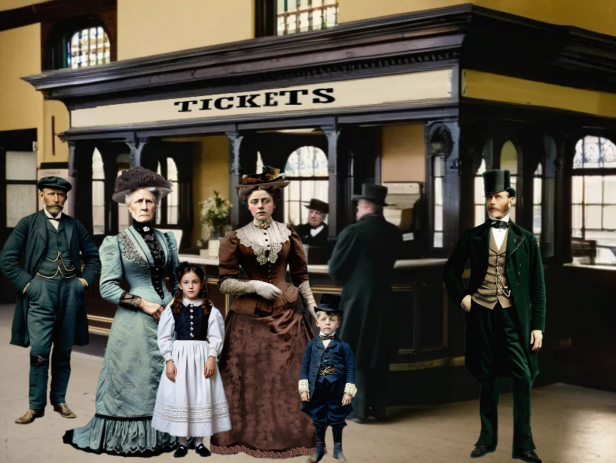
The station master was not amused to find a shockingly indecent “half naked” woman in his station. He angrily demanded to know whether Margaret was an escaped lunatic or a crumpet (whore).
While Margaret appreciated the dedication that all of these reenactors had invested with their character roles, she desperately needed for at least one of these people to take a time out so that she could borrow a phone to make a collect call to her university. The news of her discovery had to be shared with her department chair. The university would then have to begin planning a well equipped and protected 2nd expedition while creating plans about how best to best share this discovery with the government without losing control over the site.
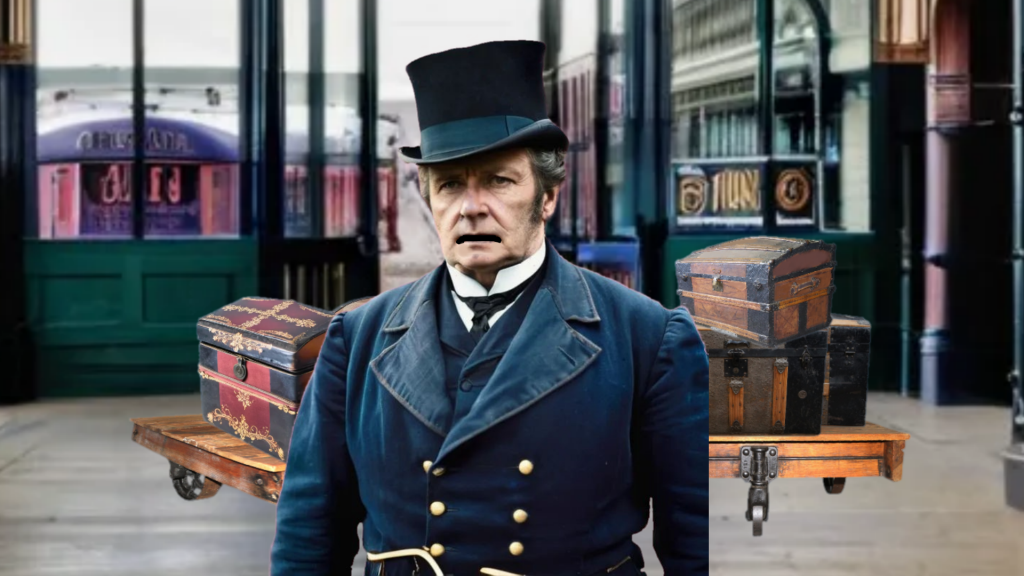
Her request for a temporary reprieve from all of this historical role playing died unvoiced as she heard the sound of hooves on cobblestones. When she glanced to her left, she saw a horse-drawn hansom cab passing in front of the station. As far as she knew, horse-drawn cabs hadn’t been used in England since sometime during the 1940’s.
When she inhaled in surprise, she noticed another difference. The air smelled different. The faint smell of asphalt and car exhaust that were common to all cities had been replaced with horse dung, coal smoke, and body odor.
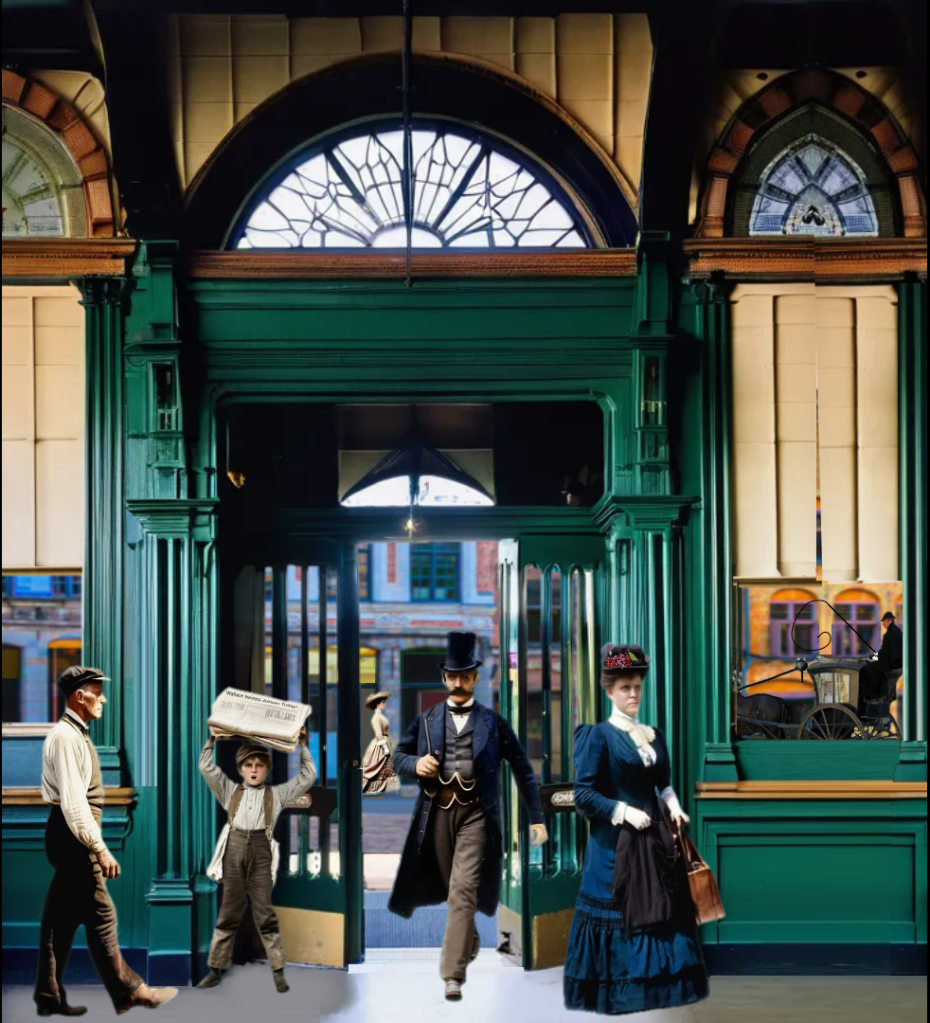
Margaret Wallace abruptly realized that she wouldn’t be able to call her university because telephone technology was still in its infancy. The transatlantic telephone cable wouldn’t be installed until 1956. Even if she had been able to telephone her university, nobody there would have known her because she hadn’t been hired until 2021, a time that was still some 131 years in the future.
The archeologist was lost in time. Her only possible way back would be to somehow cross the Atlantic Ocean, journey back up the Amazon, and again find her way to Witso’ Voladora while evading the locals. In the meanwhile, she was practically broke, didn’t know anyone in this timeline, and was scandalously underdressed for the social norms of this time period. Prior to making plans for her immediate future, she would first need to contend with the angry station master whose increasingly red face told her that he was within moments of summoning a constable.
* TO BE CONTINUED *
=======================================================
I am enjoying the process of working with an AI artist. Nearly all of the above pictures were created by AI. The image of the horse drawn carriage was heavily modified from a digital image that I found in Adobe. The Hansom cab (black carriage) was part of Wikipedia’s public domain imagery. The background image outside the train station was created by editing and blending a couple of pictures, one of which came from Adobe and the other which I found through a copyright/royalty free site called Pexels.
Everything else was created through AI albeit with heavy digital editing on my part.
The Advantages of Working with an AI Art System
When I created the Barbara, Savior of the World graphic novel series, I did this using 1/6th posable action figures that I superimposed into digital settings. To make this series, I literally had to purchase dozens of figures and supporting materials.

Although I have long had an interest in the Victorian culture, partially because I liked the fashion but also because the rules for social etiquette were well delineated; prior to discovering Starryai’s art AI, I couldn’t really do much with the Victorian era because I had insufficient costuming for the action figures. Pictured below in the blue dress is a Phicen doll wearing a Gibson Girl outfit. The background characters are both digital.
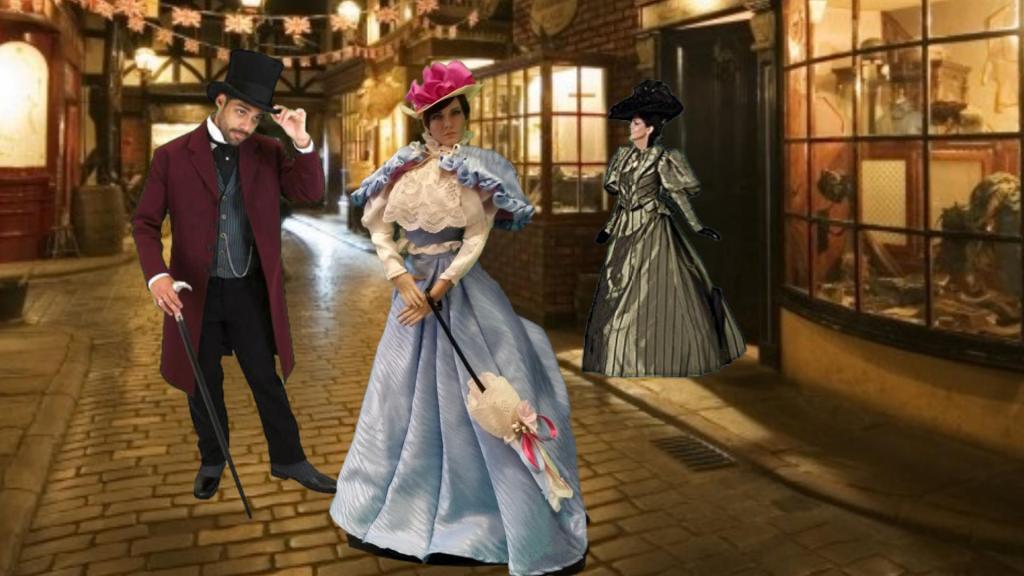
With AI, not only have I been able to create a wide array of background scenery, but I’ve been able to create dozens of images of people from the Victorian era. I am currently learning how to use the AI to create different poses for these images and to change the facial expressions for each character.
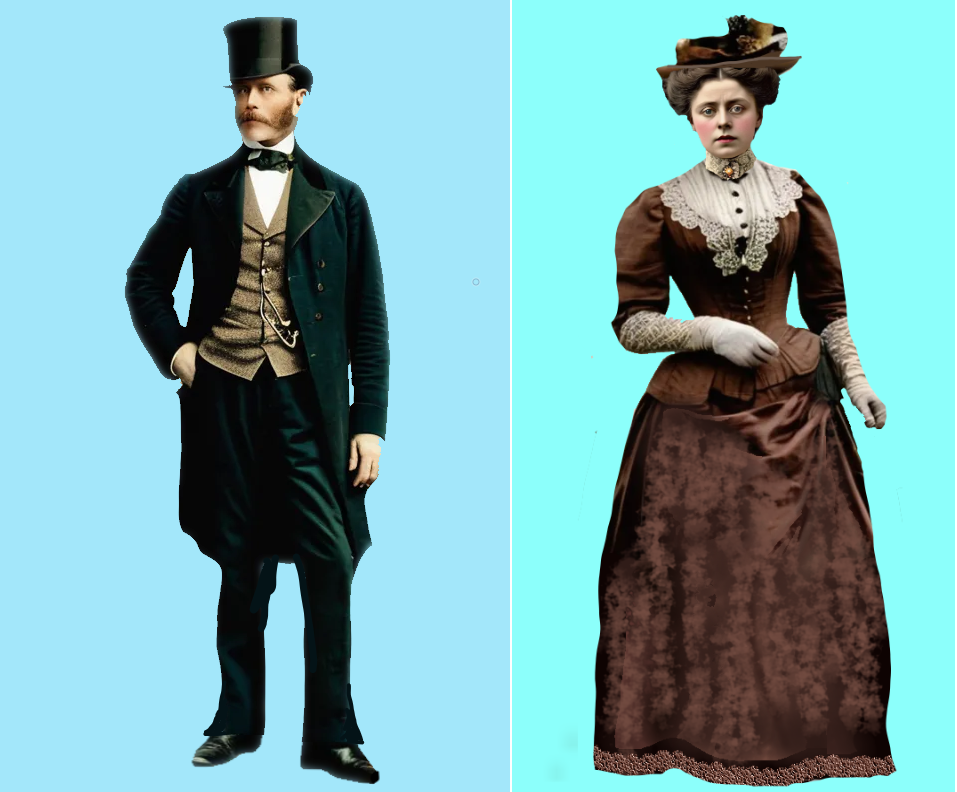
The use of editing software has allowed me to place individual AI created characters in a common setting like this train lounge for 1st class passengers.
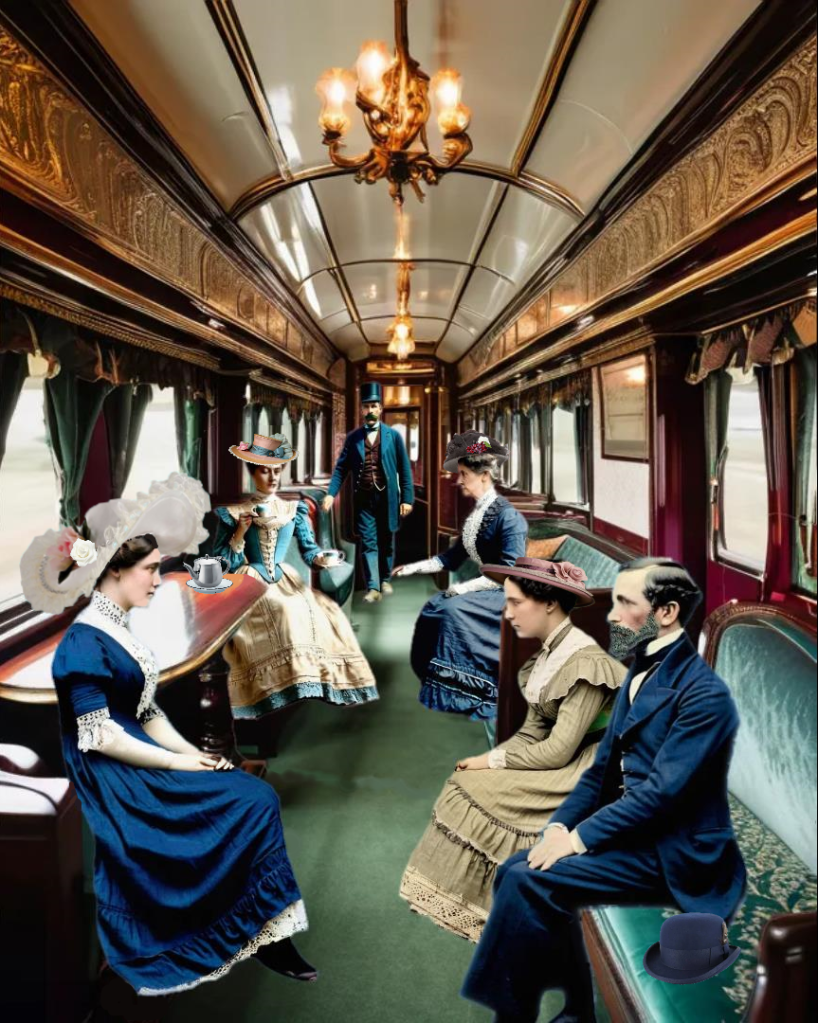
With art AI, it’s possible to make nearly anything you want subject to your own imagination, your ability to translate your imagination into prompts that the AI will use, and your skill at editing the resulting images as needed. In this picture, which I created for my own amusement, is a Victorian era fish monger with his troop of four legged feline admirers. Since I have a one year subscription to Adobe, the cats came from this service. The fish monger and wheel barrow (both heavily edited), were created by the AI. The artificial intelligence system also created the residential brownstone in the background.

When compared to the cost of memberships for sites like Dreamstime, AI is quite affordable. At this time, Starryai gives users 5 credits per day. Since it costs two credits to generate a set of four pictures, users may produce two sets of free pictures each day.
In addition to the free pictures, I currently have a weekly subscription of $7.99 for 40 credits (20 sets of 4 pictures each). At this price, each set costs nearly 40 cents. This is the more expensive option which I chose because I can only work on the graphic novel as time permits. The most (long range) affordable option would be to spend $74.99 for 1,000 credits. This would give the user 250 sets of 4 pictures each for a basic cost of nearly 30 cents per set.
The Disadvantage of Working with an AI Art System
One of the disadvantages in working with AI is that the system can only create what it knows. Part of the reason I had to find an image of a horse and carriage on Adobe was because the AI was unable to produce what I had wanted. When I asked for a color photograph of the side profile of a horse and carriage with a driver from 1890, I was given the picture below. The AI had placed the driver in the passenger seat of the carriage with his legs astride the horse’s mane. The carriage was also far too small as it could only accommodate one person. The bulk of the horse’s body appears to be missing.
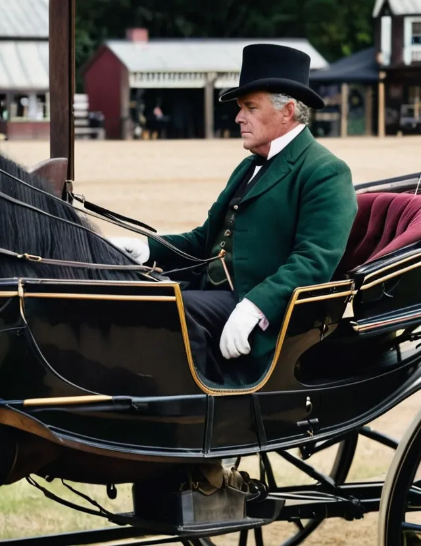
When I asked the system to produce a color photograph of the interior of a train station’s public restroom in England, 1890; it did a largely credible job save for an issue it had with the bathroom mirror. Instead of showing the back of the young woman’s head as a reflection, the AI created a disturbingly creepy image of an older woman who appeared to be climbing out of the mirror.
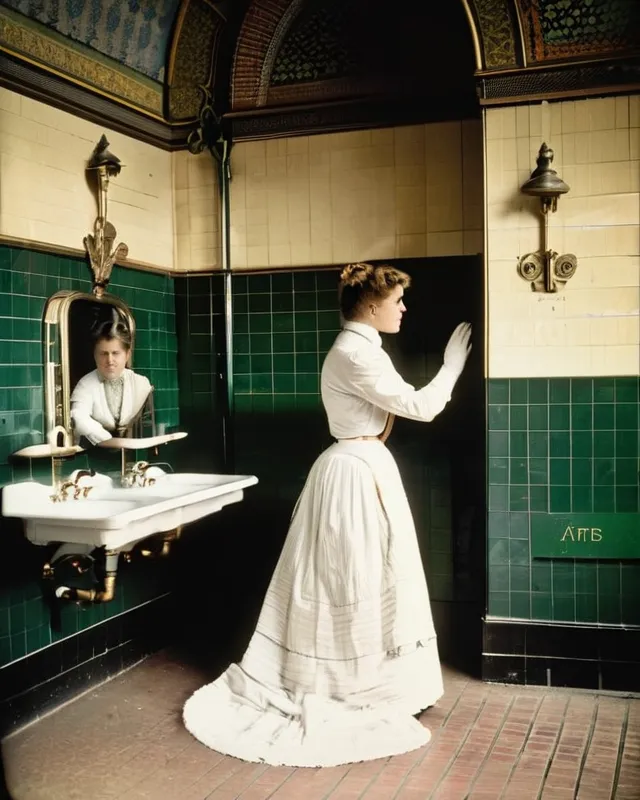
The initial picture of the train station’s ticket counter was also in need of editing. As you can see in this picture, the AI had problems with the signage. The ticket clerk’s face was also somewhat blurred. From what I understand, this is a problem that is common to many AI art systems.
Since the artificial intelligence becomes easily confused if too many details are asked of it, I have found it easier to ask the system to compose background scenery or to create individual pictures of people. I have then used editing software to superimpose these people into other pictures.
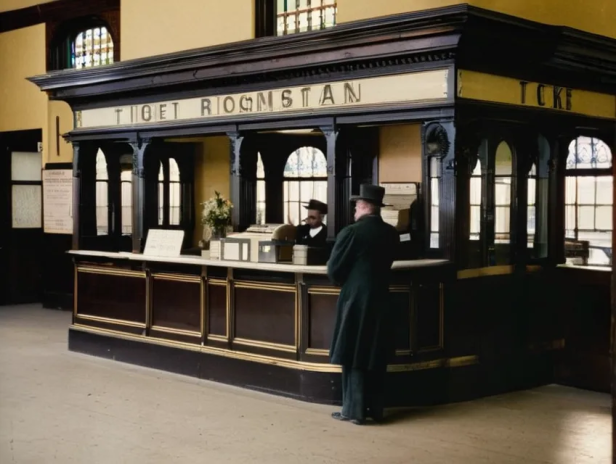
Since the AI sometimes blurs details or makes minor mistakes, it would help if users had some digital editing experience. I myself use a mixture of software which includes, Paint 3D, Corel Paintshop and Cyberlink PowerDirector.
The art AI at Starryai is not particularly creative. For now, creativity remains firmly under human control with the AI assisted software being a useful tool. I worry that this will likely change within the next couple of decades.
Whereas I now have to write detailed prompts prior to spending hours editing pictures to create a composite whole, as AI continues to evolve, there will likely come a time when everything I am now doing, could be done more quickly with AI. Work that it will currently take me months to complete, could be done in a matter of minutes.
What need will there be for graphic novelists and storytellers once this happens? The software for doing this is quickly evolving. In April of 2023, when the Hollywood Writers’ Guild went on strike, one of their concerns was that they could be replaced by AI.
Newspaper and magazine companies are already using AI writers. Forbes has an AI-powered Content Management System called “Bertie” which suggests content and titles. The Washington Post is using Heliograph which generates articles from quantitative data. Bloomberg is using Cyborg for content creation and article management. Other media giants like The Guardian, Associated Press, and Reuters are using or testing AI systems.
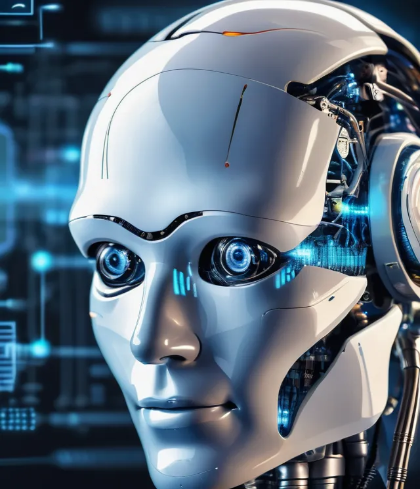
On YouTube I saw a video that had been created by a scammer who was bragging about how he was making money by finding articles of interest to submit to an AI writer. After the system rewrote each article, he would sell the content to freelance sites as “original work” for which he was being paid.
In another YouTube video, I saw how the channel content creator had uploaded one minute of audio to an AI system. The audio was from Adolf Hitler who was speaking German in a normal conversational tone. The AI used this data to precisely mimic the Führer’s tone and cadence. It then translated the despot’s words and played everything back in English sounding just like the German chancellor if this madman had actually spoken English. It was interesting to learn that Hitler had a surprisingly deep voice when he wasn’t screaming hate speech at one of his mass rallies.
AI has already made inroads by creating trailers for movies and video games. Pictured below is a short film that was created by AI as part of a competition for RunwayML’s Gen:48 competition.
The average artificial intelligence system is estimated to think some 125,000 times faster than any human being. Unlike people, they never tire, never call off work, never take vacations, and are always at their personal best. Whereas people age and eventually have to retire, AI systems get better with time and experience.
For example, in 1997, Google’s game playing system, AlphaZero, taught itself how to play chess in just four hours. Within 9 hours, it had played 44 million games of chess. With the ability to process 80 million possible outcomes per second, by the 11th hour this AI system surpassed the skill of any human chess master. By the 15th hour, it could beat any other AI chess player in the world.
AlphaZero was later trained on shogi for a total of two hours before it played Elmo, the 2017 world computer Shogi champion. In 100 shogi games, AlphaZero won 90 times, lost 8, and drew twice. As with the chess games each system had played, each program got one minute per move.
While people have to be trained for their respective jobs and many jobs require years of prerequisite education, once an AI system has been programmed it will be good to go. Multiple copies of this system could then be made.
Cigna, an on-line pharmacy, has already begun using an AI system for customer service on-line chats. According to their director of AI services, the current system is capable of handling 4,500 simultaneous conversations.

Customer service is a stressful job with high rates of employee turnover. What will happen to the customer care industry if and when AI systems are deemed more effective and affordable? There are some 2.9 million customer service representatives already working in the United States with an additional 14.3 million employed overseas.
It’s not just customer service I’m worried about.
What will happen if or when AI begins to replace writers, illustrators, customer service representatives, financial advisors, insurance salespeople, teachers, and other such jobs with artificial intelligence driven personas who will never get impatient or flustered and who will never call off sick?
What will happen to our economy once AI services have evolved to the point where the human element could be replaced? Will we become the fat, indulgent, and lazy people that were portrayed in Disney’s movie, Wall-E.
For now, I am enjoying the process of creating a graphic novel with the assistance of an art AI. I wonder how long it will be before my creativity and contributions to this project will become completely redundant.
